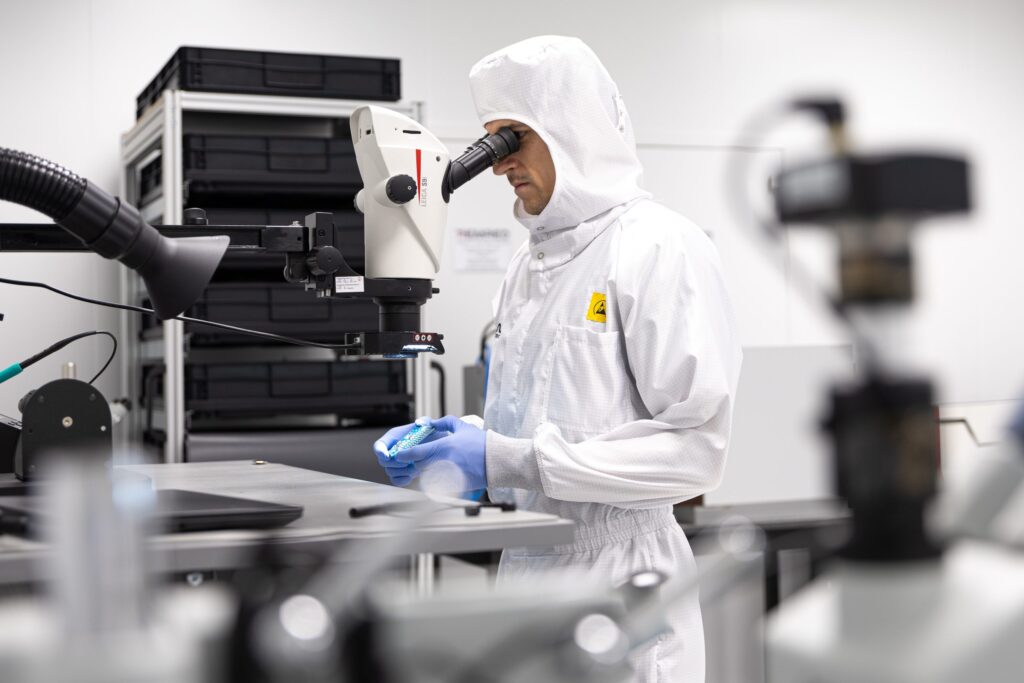Now Reading: The Mars moment: Why now is the time to build the future
-
01
The Mars moment: Why now is the time to build the future
The Mars moment: Why now is the time to build the future


We’re entering a new era of space. One defined not by exploration alone, but by the infrastructure that makes a sustained presence possible.
For decades, our presence in space has been limited to short-term missions: land, explore and return. But now that’s changing. Artemis is preparing the moon as a steppingstone to Mars, shifting the United States’ national space strategy toward sustained presence and long-term infrastructure. If the U.S. wants to lead this next phase scientifically, commercially, and strategically it must invest in the systems that make a sustained presence possible.
Mars is where that leadership will be proven. And if NASA is serious about sending humans there, and keeping them safe while they’re there, that investment in long-term infrastructure needs to start now. That begins with fully funding and executing the Mars Telecommunications Orbiter (MTO) as the first critical capability for sustained operations. Without it, future missions risk operating in isolation, with limited data return, degraded situational awareness and higher safety risks for astronauts. The time to act is before those missions launch, not after they arrive.
The U.S. has taken that first step.
In his inaugural address, President Trump declared that America would send astronauts to plant a flag on Mars. That vision is now reflected in law. NASA’s Fiscal Year 2026 budget request proposes more than $1 billion for early Mars readiness. That includes a new commercial payload delivery program, a demonstration of human-class entry, descent and landing technology, and a critical communications relay to support sustained operations on and around Mars.
That relay, the MTO, was codified into law and funded through the passage of the One Big Beautiful Bill Act. It’s the first foundational capability the U.S. puts in place to enable a sustained human presence on Mars.
And it’s the right place to start.
Because before boots can touch Martian soil, the planet must be made accessible, safe and operational for long-duration exploration. Right now, communications with the Red Planet depend on NASA’s Mars Relay Network — a collection of science orbiters repurposed over the years to support surface missions. While these assets have served admirably, they were never built to provide the high-throughput, continuous coverage that future human exploration will require. Bandwidth is limited and as these spacecraft age, the risks to mission continuity grow.
MTO is the infrastructure to close that gap. It’s the next chapter in America’s leadership in deep space if humanity has the vision and the will to build it.
At Rocket Lab, we recognized the need for this kind of dedicated relay early. In 2024, we proposed a Mars communications orbiter as part of our original Mars Sample Return architecture — well before MTO was formalized in law. Our understanding of this challenge and our commitment to solving it has been consistent from the start.
Rocket Lab’s MTO concept offers a clear path forward: a next-generation, high-performance relay orbiter that replaces today’s aging Mars Relay Network and establishes the communications backbone for Mars exploration. It’s built on flight-proven platforms already operating in space, reducing development risk, shortening timelines and allowing for more frequent upgrades as needs evolve. And critically, we proposed delivering it under a firm fixed price contract — providing NASA and U.S. taxpayers with cost certainty and faster execution compared to traditional government spacecraft.
But for that vision to become reality, NASA and its partners need to move quickly and decisively. MTO must transition from concept to contract, and it needs the sustained support of both program and congressional leadership to stay on track. Technical risks — while manageable — are real, particularly around autonomous operations, long-duration reliability and interoperability with future assets. These challenges are solvable, but they require focus and follow-through.
The risk isn’t that MTO can’t be built — it’s that it won’t be prioritized. And without it, future Mars missions will face real constraints: low data return, degraded safety margins and limited surface operations. Leadership in deep space starts with infrastructure. MTO is that infrastructure — but only if we choose to build it.
When the first human sets foot on Martian soil, MTO will ensure that moment isn’t isolated, but shared securely and in real time with Earth.
As an engineer, a founder, and someone who has spent a career working to make space more accessible, I see MTO as one of those rare missions that truly matters.
It’s time to build it.
Peter Beck is the Founder and CEO of Rocket Lab.
SpaceNews is committed to publishing our community’s diverse perspectives. Whether you’re an academic, executive, engineer or even just a concerned citizen of the cosmos, send your arguments and viewpoints to opinion@spacenews.com to be considered for publication online or in our next magazine. The perspectives shared in these opinion articles are solely those of the authors.
Stay Informed With the Latest & Most Important News
Previous Post
Next Post
-
 01From Polymerization-Enabled Folding and Assembly to Chemical Evolution: Key Processes for Emergence of Functional Polymers in the Origin of Life
01From Polymerization-Enabled Folding and Assembly to Chemical Evolution: Key Processes for Emergence of Functional Polymers in the Origin of Life -
 02Panasonic Leica Summilux DG 15mm f/1.7 ASPH review
02Panasonic Leica Summilux DG 15mm f/1.7 ASPH review -
 03How New NASA, India Earth Satellite NISAR Will See Earth
03How New NASA, India Earth Satellite NISAR Will See Earth -
 04And Thus Begins A New Year For Life On Earth
04And Thus Begins A New Year For Life On Earth -
 05Astronomy Activation Ambassadors: A New Era
05Astronomy Activation Ambassadors: A New Era -
06SpaceX launch surge helps set new global launch record in 2024
-
 07Two Black Holes Observed Circling Each Other for the First Time
07Two Black Holes Observed Circling Each Other for the First Time


















